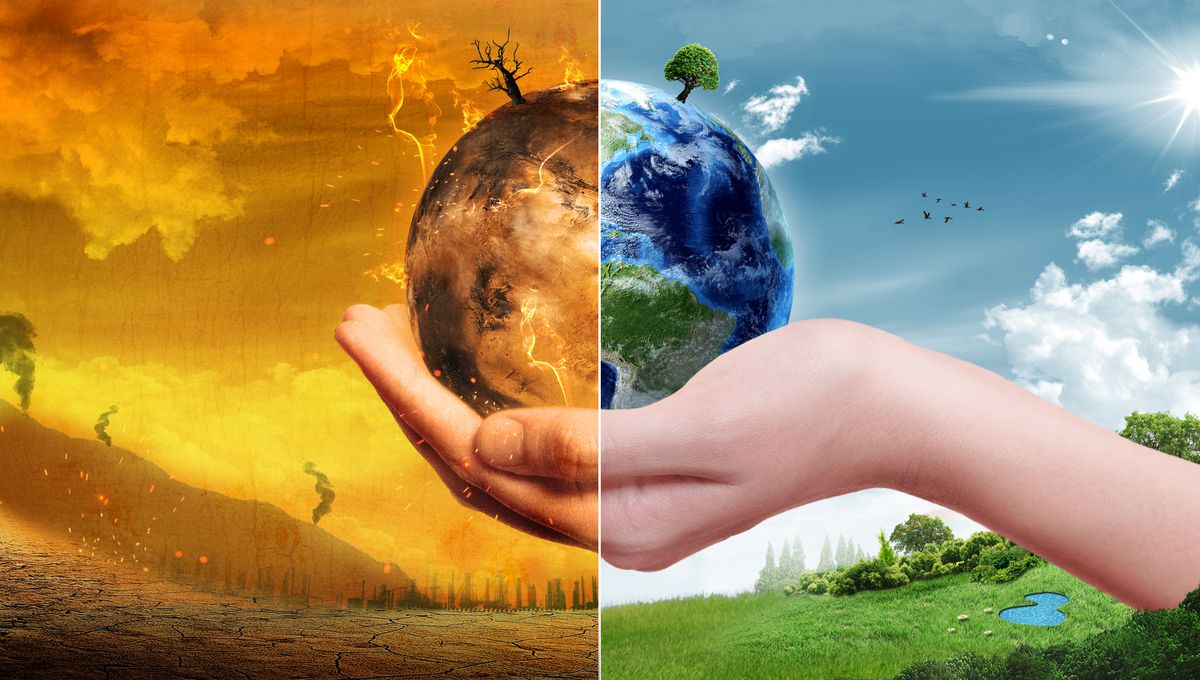Context-
Global warming presents a complex phenomenon influenced by various factors, including local conditions, historical data, and natural variability such as El Niño events. While the focus often remains on temperature thresholds like the 1.5 degrees Celsius mark, understanding the patterns of global warming is crucial for managing associated disasters effectively.
Palaeo Proxies: Insight into Historical Warming Trends
Many warming records were broken in 2023 along with climate disasters such as wildfires, cyclones, droughts, and floods. In this time, the focus of the public narrative — often with the participation of scientists — has often been on whether we crossed the ‘magical’ warming threshold of 1.5 degrees C. The best estimates, derived from data recorded by instruments, say the planet is just under this threshold.
Palaeo proxies offer valuable insights into historical temperature trends by utilizing chemical evidence stored in organic matter such as corals, stalactites, and stalagmites. Despite their utility, these proxies have limitations and provide only indirect evidence of temperature changes. Researchers meticulously calibrate chemical compounds assimilated by species to approximate past temperatures. However, these proxies offer local temperature anomaly estimates and cannot fully substitute instrumental records.
Furthermore, a recent study published in Nature has stirred controversy by suggesting that the Earth's surface has already warmed by more than 1.5 degrees Celsius over pre-industrial levels based on palaeo-thermometry. However, the study's reliance on data from a single location raises concerns about its applicability to global trends.
Challenges in Explaining Warming Patterns
Despite advancements in climate science, there remains a significant gap in explaining the patterns of global warming. The complexity of factors influencing warming patterns, including El Niño events and regional variations, poses challenges for researchers. For instance, the distribution and intensity of the 2023 monsoons in India defy explanation, highlighting the intricate interplay between El Niño, global warming, and local climate phenomena.
Moreover, the absence of a comprehensive understanding of warming patterns hinders our ability to manage climate change impacts effectively. Accurate predictions of warming patterns are essential for adapting to changing seasons and mitigating the adverse effects on lives, livelihoods, and economies.
El Niño Dynamics: Influencing Global Warming Patterns
El Niño events play a crucial role in modulating global warming patterns by redistributing heat across the tropical Pacific Ocean. During El Niño years, the ocean absorbs heat and releases it, leading to global temperature fluctuations known as teleconnections. The spatial distribution of warming during El Niño events varies, impacting regional climates differently.
Moreover, El Niño teleconnections interact with global warming to amplify or dampen temperature anomalies in specific regions. For instance, the recent deluges in California, driven by El Niño, underscore the complex interplay between natural variability and anthropogenic climate change. Understanding these dynamics is imperative for accurately predicting warming patterns and managing associated risks.
Regional Variability: Implications for Climate Adaptation
The impact of global warming varies regionally, highlighting the need for localized adaptation strategies. Arctic regions and desert areas experience amplified warming, while coastal regions may experience mitigated effects due to oceanic influences. Understanding regional variability is critical for developing tailored adaptation measures and mitigating the adverse effects of climate change.
Furthermore, accurate predictions of regional warming patterns are essential for informing policy decisions and allocating resources effectively. By integrating regional climate models and observational data, scientists can enhance the accuracy of climate projections and assist policymakers in developing targeted interventions.
The Role of Climate Models in Predicting Warming Patterns
Climate models play a crucial role in predicting future warming patterns and assessing the impact of mitigation measures. These models integrate various factors, including greenhouse gas emissions, land use changes, and natural variability, to simulate global climate dynamics. However, uncertainties in model projections necessitate continuous refinement and validation against observational data.
Moreover, advances in machine learning and data assimilation techniques hold promise for improving the accuracy of climate models and reducing uncertainties in future projections. By integrating observational data with model simulations, scientists can enhance the reliability of climate predictions and inform evidence-based decision-making.
Conclusion:
In conclusion, the patterns of global warming are influenced by a myriad of factors, including regional variability, natural phenomena like El Niño, and human-induced climate change. While temperature thresholds like 1.5 degrees Celsius serve as important benchmarks, understanding the spatial distribution and temporal evolution of warming patterns is essential for effective climate adaptation and mitigation.
By leveraging palaeo proxies, advancing climate models, and integrating observational data, scientists can enhance our understanding of global warming patterns and improve the accuracy of future projections. Moreover, interdisciplinary collaboration and stakeholder engagement are critical for developing holistic solutions to address the challenges posed by climate change.
Ultimately, by prioritizing the study of global warming patterns and investing in robust scientific research, we can mitigate the adverse effects of climate change and build a more sustainable future for generations to come.
|
Probable Questions for UPSC Mains Exam-
|
Source- The Hindu








